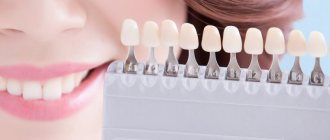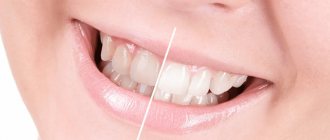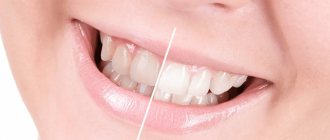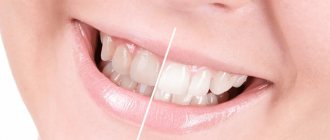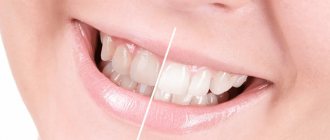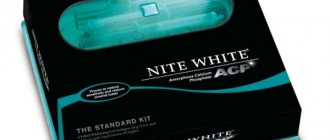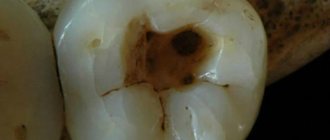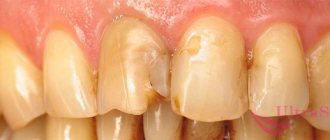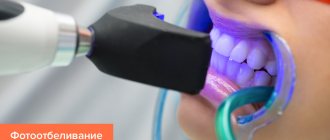A snow-white smile is the dream of every person. And everyone is interested in safe teeth whitening. Many people have heard about bad experiences from friends and the Internet and are afraid to repeat these mistakes. But the procedure has been well studied, but it is important to know which Moscow clinic can provide truly high-quality and gentle teeth whitening.
Is whitening safe?
What is teeth whitening? This is a cosmetic procedure in which the color of dentin changes (namely, the color of the tooth depends on it) - lightening by several tones under the influence of active substances. Whether it is safe or not depends on the professionalism of the dentist, as well as on the technologies and drugs that are used for these purposes (these must be registered drugs, modern methods). If we are talking about whitening at home, everything is the same, only instead of a doctor, it is the rationality of a person.
ROOTT Clinic expert on the most important things when whitening
In general, whitening is a fairly safe procedure if the teeth have good mineralized enamel, healthy gums and good oral hygiene.
Properties of soda
Sodium bicarbonate can disinfect surfaces as an antiseptic, which is good for whitening
The unique properties of soda have made the product popular in various areas of human life, this is explained by the three main properties of the powder: antiseptic, regenerating, cleansing.
Antiseptic properties
Sodium bicarbonate can disinfect surfaces as an antiseptic.
This property has a positive effect on enamel whitening. Thanks to him, the procedure prevents harmful bacteria from entering the oral cavity.
Regenerating properties
Sodium accelerates skin regeneration by affecting metabolic processes in cells. When teeth whitening, it has a beneficial effect on the condition of the gums and improves their condition.
Cleansing properties
Large powder particles are capable of removing a thin layer of the surface. This applies to both plaque and tooth enamel. Soda owes its instant effect to this property.
Indications and contraindications
Most often, the patient prescribes the indication for whitening to himself - he is not satisfied with the aesthetic appearance of especially the front teeth, which are visible when smiling. I want it to be whiter and more dazzling.
Darkening of the enamel can also occur due to frequent intake of coffee, cigarettes, dark berries and even medications.
But there are also a number of contraindications
:
- pregnancy and lactation;
- age under 18 years;
- allergies to drugs;
- the presence of fillings, crowns, veneers (they simply do not whiten);
- bracket systems, staples;
- cancer;
- hypersensitivity;
- active caries, periodontitis or other oral diseases;
- wedge-shaped defect (dentin exposed);
- rapid abrasion of enamel;
- in some cases diabetes mellitus.
You should definitely consult with your doctor about indications and contraindications so that together you can choose a safe method for teeth whitening. And of course, carry out a complete sanitation of the oral cavity to avoid uneven color after the procedure.
Before-after photos of teeth whitening at the ROOTT clinic
What harm can bleaching cause?
The safest teeth whitening will be under the supervision of a professional dentist. Indeed, with inept management and the wrong approach, a number of troubles can arise:
- Negative effects on tooth enamel of incorrectly selected concentrations of bleaching agents. This is both increased sensitivity and an increase in the microporosity of its structure. Over time, the ingestion and accumulation of food dyes may cause the tooth color to become even darker than before;
- chemical burn of gum tissue due to improper isolation;
- uneven lighting.
What whitening methods are there?
The dentist will advise which teeth whitening is safe for each patient individually. But everything that takes place under the supervision of a doctor will definitely not harm - there is no doubt about it, especially when using the latest technologies, delicate compounds and modern developments.
Professional teeth whitening methods:
- Photobleaching;
- laser whitening;
- whitening gel only;
- hardware method.
The first two methods use a lamp or laser as a catalyst for the action of the whitening gel.
Photobleaching, for example, ZOOM, enhances the effect of active hydrogen peroxide, helping to quickly break it down into free radicals - oxygen atoms. of up to 10 tones occurs.
. With proper care, the results last for several years.
The laser procedure differs in that instead of a light beam, a laser beam acts. It can heat the surface, which causes sensitivity (everything is in the hands of a professional doctor, since the advantage of a laser is accuracy), and copes well with changing color by 10-12 tones
and maintaining it for up to 5 years. The downside is the high cost of the method.
Dentists are still arguing about what is the safest teeth whitening, and whether laser and light are necessary for the best results. But it has been proven that the method of applying gel without using them is also effective. Opalescence technology with 40% hydrogen peroxide in the gel is cheaper in price and has proven itself in aesthetic dentistry.
A simple dental cleaning at the clinic is often sufficient for many people. After removing stones and plaque, the teeth become several shades lighter. Using one of these methods:
- Air-Flow hardware cleaning (the principle is similar to a sandblasting machine, but instead of sand, soda);
- ultrasound.
You can be satisfied with the result of your renewed smile.
Rinse liquids
Whitening liquids are one of the newest products for at-home teeth whitening. Like most mouthwashes, they freshen breath, help reduce plaque, and prevent gum disease. But these products also include ingredients, such as low concentrations of hydrogen peroxide, that whiten teeth. Manufacturers claim that to obtain the desired result, it is necessary to use the liquid for 12 months, daily, twice a day before brushing your teeth. However, the rinse may not be as effective as using other whitening products because the whitening liquid only contacts the teeth for a short period of time (only 2 minutes compared to the 30 minutes required for most strips).
Below is a summary of some of the home whitening systems available on the market. The numbers indicating the concentration of the active substance given by manufacturers are not always correct. Sometimes the concentration is exaggerated for marketing purposes.
Is it possible to whiten teeth safely at home?
The market offers more and more varieties of home whitening methods, whether they are safe or not - everything is individual. And the course usually lasts 10-20 days. However, not everyone is of any use.
Manufacturers offer:
- Whitening strips;
- mouth guards with active composition;
- felt-tip pens, markers;
- toothpastes with whitening effect.
All products contain the same hydrogen peroxide, but in a much lower concentration. Therefore, it will be possible to lighten and visually change the color of the enamel by 1-2 tones.
Rather, this is a lightening procedure, that is, you can safely bleach if you agree to change the shade by just a couple of tones, and are willing to spend a lot of time for a relatively small result.
But using professional products at home is not recommended. Is it dangerous.
Safe whitening steps
- It is necessary
to carry out professional oral hygiene a few days - Isolation of soft
gum tissue. If you isolate the gum incorrectly, the patient will receive a severe burn, which will lead to complications. Therefore, safe teeth whitening in dentistry should only be carried out by an experienced doctor specializing in this field. - A special gel
based on hydrogen peroxide is applied. It is updated every 15 minutes: it is removed from the surface of the teeth (as it develops its properties) and a new portion is applied. The gel is changed three times. - Activation of the gel using a special lamp
. The dentist places a special lamp, the light of which will activate the gel. It is necessary to speed up the procedure and reduce it to 1 hour. The lamp has a cold LED light that does not heat the enamel structure and the procedure is comfortable for the patient. - Removing gel
from the enamel surface and all insulating materials from the gum surface. - Procedure for strengthening teeth
. A gel is applied that strengthens tooth enamel and reduces sensitivity.
Whitening is carried out in the smile zone, from 5 to 5 teeth of the lower and upper jaw. The procedure takes on average 1 hour
. Anesthesia is not given. This is necessary so that there is direct contact between the patient and the doctor, and the former can report if discomfort or pain occurs. Otherwise, you may miss the moment when something went wrong: a burn to the mucous membrane, too aggressive exposure to the material, a person’s low pain threshold.
How to use to achieve natural whiteness?
Does baking soda whiten teeth and how to do it? This home remedy can be used alone or as just one component of an enamel lightening product.
Methods
First, let's talk about the three main ways to use it .
They can be combined with each other, choosing for yourself which combination or method is more suitable, taking into account individual characteristics and personal perception of the main active component.
So, baking soda can be used:
- In its purest form
. This refers to the powder itself, not diluted with any other components.It can be used by those people for whom contact with a large amount of soda on the mucous membrane does not cause discomfort, burning and pain, as well as bleeding.
- As a concentrated solution
. Of course, the solution will be used to rinse the mouth.It is quite simple to prepare - a certain amount of powder is completely dissolved in warm water. If the next portion of soda in the liquid is already poorly soluble, it will be a concentrated composition.
- Mixed with other ingredients
. Various components in combination with simple baking soda can significantly enhance and prolong the whitening effect.Each such mixture requires a special approach and a specific preparation technique, which will be discussed further.
The first, simplest, method gives a very good and quick result, but it is advisable to use it no more than once a week or 10 days.
Recipes
The methods describe the use of sodium bicarbonate in home enamel whitening in general. Therefore, specific recipes will also be useful .
- Paste.
One of the most popular whitening recipes is preparing a special toothpaste.Sodium bicarbonate is added to a small amount of paste sufficient for one-time cleaning in a ratio of two to one (two parts of the paste). The resulting composition simply cleans your teeth well.
- Cleaning with soda.
The simplest recipe that does not require preparation. Apply a little powder to a soft brush dipped in water. After this, the teeth are brushed with the usual sweeping movements. The duration of the procedure is about 1 minute.In this case, the product will definitely get on the mucous membrane, so after the procedure you need to rinse your mouth well.
- With the addition of coal.
You can take sifted wood ash. However, it is easier to use an inexpensive and accessible pharmaceutical product - ordinary activated carbon. It has the same properties as the mentioned ash.In a dry container, mix an equal amount of soda and powdered charcoal tablets. This mixture is used with the same recommendations as just baking soda powder - applied to a soft brush and carried out regular cleaning.
- Gauze swabs.
This recipe is suitable for those who have some tooth sensitivity. It does not give a strong abrasive effect, so the whitening will be soft, but longer lasting.In a small gauze swab, generously moistened with water, you need to wrap a spoonful (as much as you can fit, depending on the size of the swab) of soda. After a few minutes, the powder will dissolve a little and the procedure can begin.
A swab is simply used to wipe all surfaces of the teeth, avoiding the mucous membrane of the palate and gums, as well as the tongue.
- Lemon juice.
To prepare the whitening mixture, add lemon juice to the soda at the rate of 3-5 drops per half teaspoon. Dip a brush or a thick gauze swab into it, and then rub it separately into the enamel of each tooth, being careful not to press too hard.Lemon enhances the effect, and also perfectly refreshes the mouth and muffles the unpleasant taste of soda. Instead of a gauze swab for sensitive teeth, it is recommended to apply the composition using the pad of the index finger, then the effect will be softer.
- Rinse.
It is better to rinse with a concentrated solution. The technique for its preparation is described in the bleaching methods above. The procedure is carried out with no less than a full glass of solution before or after cleaning with a regular paste.To achieve the effect, such rinses must be systematic. For those whose teeth quickly darken, it can be used in courses of 10–12 days every month.
- Strawberry.
Garden strawberries contain a lot of useful substances. They simultaneously enhance the brightening effect and soften the effect of the abrasive, removing its unpleasant aftertaste.For cooking you will need 2-3 fresh small berries. They need to be washed thoroughly and kneaded with your hands into a homogeneous paste. Add a pinch of soda powder to it and mix thoroughly.
The final composition should have a paste-like consistency. They are cleaned using a brush with soft artificial bristles.
The procedure should be carried out once a day (preferably before bedtime). The course lasts, depending on individual needs, from 7 to 15 days.
- Iodine solution.
This is another inexpensive pharmacy product that, in combination with sodium bicarbonate, can give an amazing effect.Add 2-4 drops of a classic 5% iodine solution to a teaspoon of powder. Stir using a plastic or wooden stick.
The resulting mixture is gently rubbed into the surfaces of the teeth with massaging movements and left for 3-5 minutes. In addition to the whitening effect, the use of this composition will also help get rid of various bacterial diseases of the oral cavity.
- Vinegar.
A good effect can be achieved by using a mixture of vinegar and soda to apply to the enamel surface.A solution of edible vinegar is gradually added dropwise to a small amount of powder until a viscous soft mass is formed. It needs to be gently rubbed into the enamel, wait a few minutes and rinse well by rinsing your mouth.
The last recipe will appeal to those who may have allergic reactions to iodine.
Watch the video for the process of preparing a mixture for teeth whitening with baking soda and lemon:
Professor Neumyvakin's method
He partially repeats the recipe described earlier with the addition of lemon juice to the soda. However, Neumyvakin took it as a basis and modified it. In this case, another component is added - peroxide.
Recipe:
Combine half a teaspoon of baking soda in a container, add 15 drops of a 3% peroxide solution and 5 drops of fresh lemon juice. Mix all components until smooth.
Application:
using a cotton pad, the resulting mixture must be carefully applied to the external, internal and chewing surfaces of all teeth, without touching the soft tissues. The composition must be thoroughly rubbed in, making gentle circular movements.
After this, you need to spit out the remaining product and do not drink or eat for 15 minutes after the procedure. Then the mouth should be rinsed well with warm, clean water.
Is activated charcoal effective for teeth whitening? Properties of the drug and precautions.
In this article we will tell you what disadvantages are noted in reviews of laser whitening.
Which pencil to buy for teeth whitening, read here https://www.vash-dentist.ru/krasota-i-uxod/otbelivanie/karandashi/zubov-nyuansyi-primeneniya-vidyi-i-otzyivyi.html. Review of various manufacturers.

